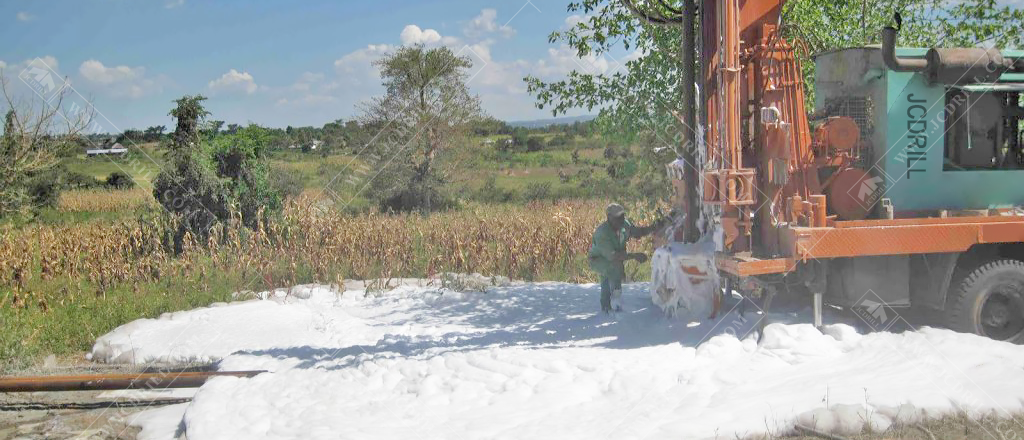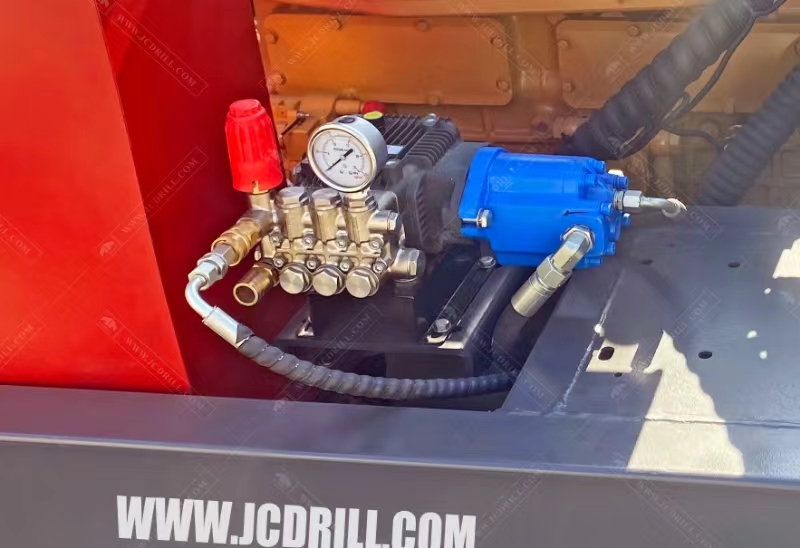Apr. 03, 24
Foam drilling is a drilling technique that involves the use of a polymer foaming agent, water, and compressed air. Foam is composed of a continuous liquid phase that surrounds and traps the gaseous phase. Its main characteristics are a relatively low density and extremely high viscosity. This combination of properties gives foam a major advantage over mist and dry air drilling.

Drilling with ‘foam’ combined with compressed air is used in different ways to help the drilling process.
High velocity foam –air misting
When drilling consolidated rock with compressed air, clouds of dust can be blown out of the hole.
Pumping a trickle of water into the airline will very effectively dampen the dust cloud, protecting both the health of operators and the equipment. Adding a soap solution (0.5 – 1.5% dilution) helps keep the hole walls clean and prevents small water-bearing fissures being clogged up and damp collars of drill cuttings forming above the drilling action. Typically, soap solutions used are biodegradable surfactants:
they can be bought as specialist drilling additives or, conveniently and cheaply, as plain quality liquid dish-washing detergents or cold-water-mix laundry washing powder. Using foam, it is possible to drill
successfully at lower up-hole air velocities because the foam keeps the hole cleaner and the bubbles help lift material clear at lower speeds.
Low velocity foam –stable foam column
By steadily injecting a mix of polymer drill mud(35-40 Marsh funnel seconds) and drill foam(0.5–1.5% dilution) into a flow-controlled air supply,it is possible to create a slow-rising column of stablefoam, which lifts material out of the hole. It does not erode the formation and uses very little air, therefore allowing large diameter holes to be drilled in soft formations with small compressors. The effectto be created in the hole is a continuous mixed column of rising foam bubbles – similar in consistency to that of aerosol shaving foam. The foam will ‘mushroom’ in waves out of the top of the hole,carrying the drilling debris from the drill bit. If too much air is mixed with too little foam flow, little foam will erupt and the column will be broken by pockets of air. Good stable foam, if scooped between a pair of hands will lay quite thick and prevent the hand palms from touching easily. It will form a mass of soap bubbles with a definite body to it. The foam texture will change after water is laying in the hole – the bubble structure often gets larger with more dilution.
Foam drilling is a very useful method to drill a larger diameter than the air compressor capacity could drill directly
It is an impressive technique to apply to constructing a hole in the ground using very little compressed air and a small volume of water. It should be seen to be believed and time should be allowed for inexperienced drill crews to get confident in its application.
Foam drilling is used when water inflow is anticipated. In order to achieve efficient cuttings transport, the annular velocities have to be kept at a relatively low rate (~100 ft/min). Moreover, foam drilling generally requires lower compression power, compared to dry and mist drilling methods.
A good foam drilling design should assume around 60 percent minimum downhole foam quality with an annular velocity of 100 ft/min. Foam qualities can be controlled within the wellbore by adjusting the annular back-pressure.
On JCDRILL’s drilling rig, we equip with a foam pumps to inject a ‘foam’ mix at quite low flow rates into the compressed air supply line to make soap bubbles form in the borehole (See below picture).the foam pump driven by hydraulic motor,which have different foow rate and pressure available for choice according to different project demand.
